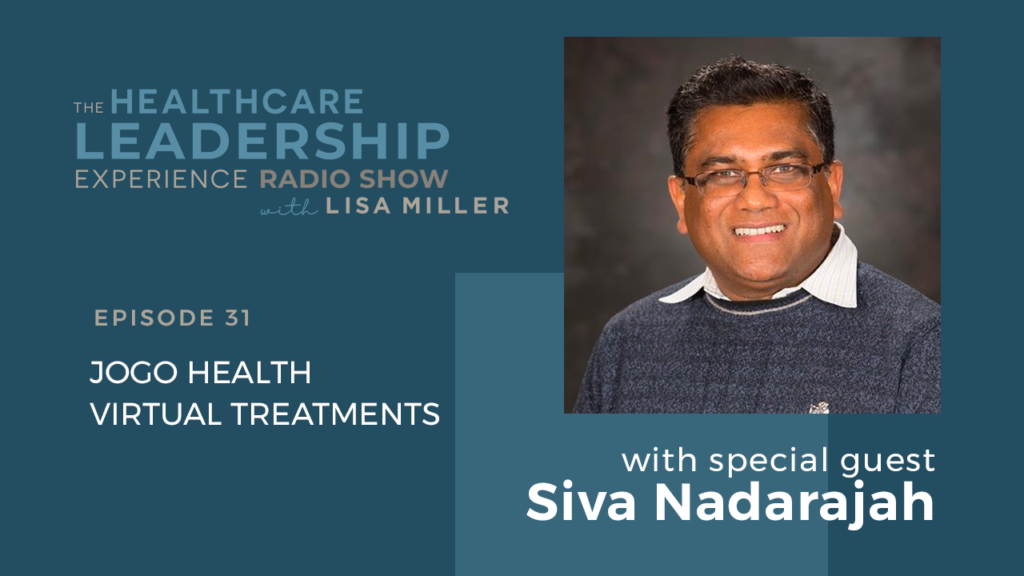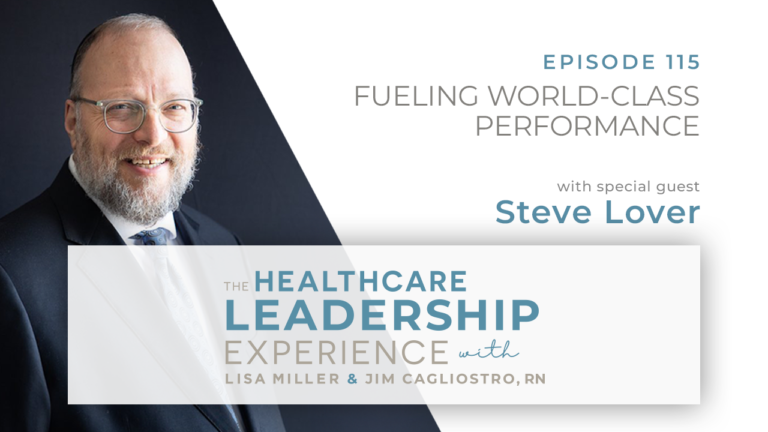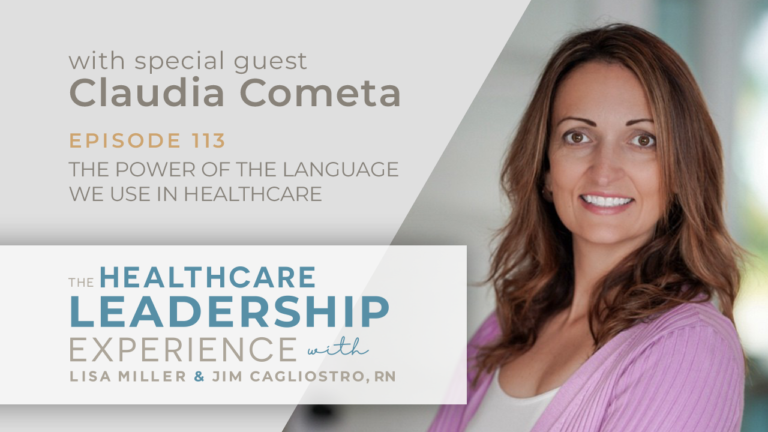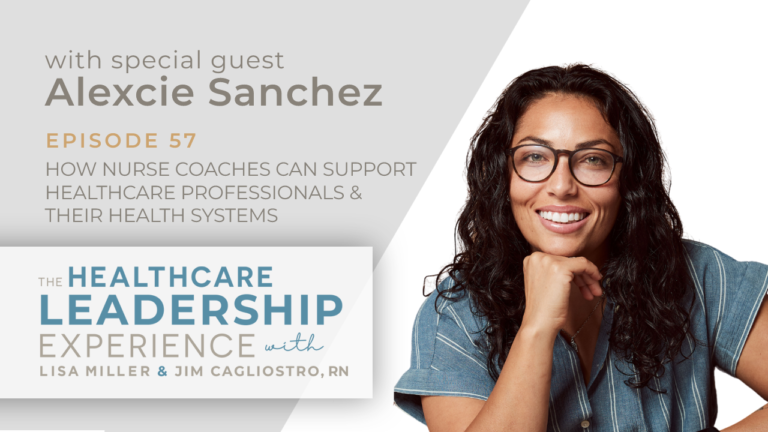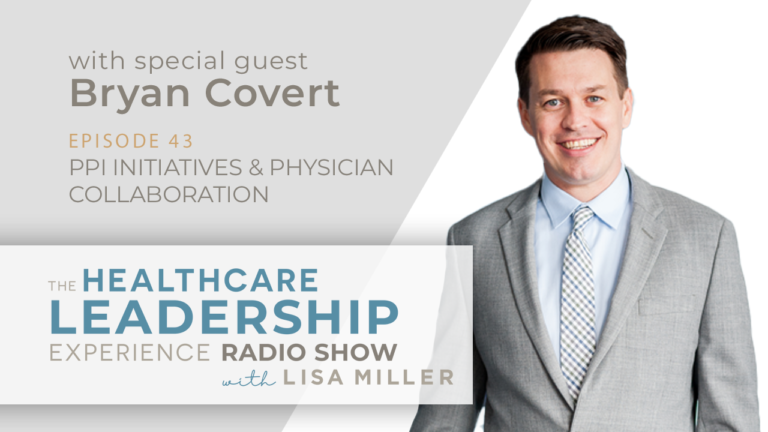Patients receiving JOGO treatment show better health outcomes than patients receiving standard treatments.
In this episode, Lisa is joined by Siva Nadarajah, the co-founder and President of JOGO Health to discuss the benefits of JOGO’s AI driven app and wearable sensors for patients with a variety of health conditions
In this episode:
- Breakthrough therapeutics for chronic pain, stroke, urinary, incontinence built on a clinically proven science of neuroplasticity.
- Origins of JOGO and background of Siva Nadarajah.
- Patients receiving JOGO treatment show better health outcomes than patients receiving standard treatments.
- Offering a new revenue stream and opportunities to enhance hospital margins.
- Overcoming patient challenges with telemedicine, and the role of health coaches.
- JOGO as software-as-a-service, forming a risk-based partnership with hospitals.
Connect with Lisa:
📧 lmiller@spendmend.com
📱https://www.linkedin.com/in/lisamiller/
Episode Transcripts
CLICK HERE TO DOWNLOAD THE PDF TRANSCRIPT
CLICK HERE TO OPEN THE FULL TRANSCRIPT
Intorduction (00:02):
Welcome to The Healthcare Leadership Experience Radio Show, with your host, Lisa Miller. Lisa is an entrepreneur, inventor, advisor, and founder of VIE Healthcare Consulting, the leading healthcare advisory and analytics firm, helping hospitals accelerate their emerging improvement goals. Lisa loves to think differently — and collaborates with leaders and their teams to solve challenges and to create new, innovative approaches that impact the clinical and business side of healthcare. Our show will bring you leaders and innovators, within healthcare and across multiple industries. Be a part of the discussion that will give you a unique perspective, deep insights, and roadmaps to successfully help you navigate the clinical, financial, and operations of healthcare. Your show starts now.
Lisa Miller (00:49):
Welcome to The Healthcare Leadership Experience Radio Show on Healthcare-NOWRadio. I am really excited today. We have a special guest with us, Siva Nadarajah, and he is the co-founder and President of JOGO Health, and he has some exciting new studies and treatments to share with hospital leaders and our listeners. So, I wanna give you a little bit background on Siva and JOGO, so we’ll be talking today about their breakthrough therapeutics for chronic pain, stroke, urinary incontinence — and why every hospital should be incorporating this kind of care for their patients. JOGO is built on a clinically-proven science of neuroplasticity, and comprises an AI-driven mobile app and wearable sensors to provide virtual treatments for chronic pain, Parkinson’s, tremors, stroke and incontinence, and other various movement disorders.
Nine out of ten patients who have received JOGO treatment show clinically significant improvement, reduced medications, and avoid surgery. It’s very interesting, because studies show that over 65% of patients with chronic pain, Parkinson’s and post-acute stroke and pelvic disorders do not fully recover with current treatments, and this results in hospital readmissions and unnecessary ER visits, so today we’re going to speak with Siva about, uh, the work he and his team is doing, and welcome, Siva.
Siva Nadarajah (02:18):
Well, thank you, Lisa. Thanks for the time, thanks for, uh, the opportunity you provide for what JOGO is all about (laughs).
Lisa Miller (02:25):
Yeah, that’s great. I wanted to mention one more thing before I, uh, get a little background on you, and I was reading this morning a little bit more about the recent news on JOGO, and I, it was interesting to see that… I saw a quote and it said, “There are more than 46 million older adults aged 65 and older living in the US, and by 2050 that number is expected to grow to almost 90 million.” So, you know, between 2020 and 2030 alone, this is the last of the baby boomers, right? And that number is projected to increase by almost 18 million, so we have this int-… uh, this convergence of 51% of the aging population will suffer from urinary incontinence, and suffer stroke every 40 seconds, and 38% will suffer chronic low back pain. And JOGO treats all these conditions, and that’s why I’m so excited to have you on the show and love to have our listeners learn a little bit more about you and JOGO and how you started, and just give us some background, that’d be great.
Siva Nadarajah (03:26):
Sure, sure, Lisa. So, a little bit about myself, so I’ve been in the healthcare industry for almost 22 years, uh, working primarily in the pharmaceutical and medical device industry. JOGO is my second venture. My previous venture was an AI-based, uh, drug and vaccine safety software that we built, uh, back in 2010, which were acquired by one of the largest clinical research organizations called IQVIA, the software, interestingly, currently being used by major vaccine manufacturers to monitor Covid vaccine side effects, which I’m very happy that something that we built back then is currently being used, so I’m very proud and happy about my previous venture.
JOGO actually originated at NYU Rusk Rehab center. There was a doctor named Dr. Joseph Brudny, he was a neurologist and a physiatrist, and there was an engineer from Rockefeller University called Dr. Gordon Silverman. That’s where this name comes from; Joseph and Gordon, JOGO. So, Gordon Silverman was the original visionary behind the EMG system in the US; he is an engineer and also a cognitive neuroscientist. So both of them developed this machine back in the days at Rusk Rehab to basically treat stroke patients through this mechanism of neuroplasticity. So neuroplasticity and the science behind JOGO is very, very old, it’s not new science, it’s called EMG biofeedback, but the science never took off because the machines that they had those days were big and they were clunky, and also the signal-to-noise ratios was so high, so it was very difficult to give this treatment to patients.
So although patients from all over the world came to, uh, NYU Rusk Rehab, I mean, this was not democratized for every patient in every, every part of the US. That’s when the team from JOGO met with these researchers and we created this new way, using an old science, we created this new modality where currently, the… through AI, very specifically AI, because AI gives you a lot of tools to make sure this treatment is accurate enough for patients, and also the cloud computing and mobile, where this treatment can be given remotely through an app. So now JOGO, essentially, is a sensor, it’s a small, wearable sensor that you wear on your body, and it has an app, which is driven by machine learning and AI, where you can give this treatment remotely to patients to recover from stroke, recover from incontinence, recover from chronic low back pain, and we’re doing some work on Parkinson’s as well.
So if you look at JOGO, think about: you have adapted PC at home, you have a small sensor that you wear on your body, and someone remotely can give you treatments, so you don’t have to travel to a hospital or someplace to get this fantastic treatment that existed for very long but n- nobody was able to use it because of the complexity of the whole… the whole system, so, hope I answered your question, Lisa.
Lisa Miller (06:36):
No, you did answer my question, thank you, it’s… it’s complex, but you broke it down into a, you know, a way that you can visually understand the technology and how it could be used at home. So I, I wanted to start to talk a little bit about the ways that, you know, hospitals are using and can further use in a deeper way the JOGO treatments, particularly if we can start with chronic lower back pain and then, uh, move towards joint replacements and talk a little bit about CJR and other ways that you can help hospitals with some of their challenges and… So if we can speak a little bit about chronic lower back pain and how hospitals can use an alternative therapy in a more successful way for their patients?
Siva Nadarajah (07:24):
Sure. Sure. So the science has been studied for chronic lower back pain for a very, very long time, right? Uh, recently, last year, just when the Covid hit, we partnered with Brigham’s and Women’s Hospital in, in Massachusetts to conduct our first clinical trial on chronic lower back pain. So think about patients, u- sh- getting this unit shipped home, and we work with the patients, it’s an 8-week program, to work on three muscle groups, especially the low back muscle, trapezius muscle and the latissimus muscles in, in the back.
And JOGO, what it does is reduces the muscle tension, so if any-… Anybody who hasn’t recovered from physical therapy who had low back pain will benefit from JOGO, so think about, you know, you usually have, you know, acute pain, then you go to physical therapy, then you get a little better, then… but you still have pain, chronic lower back pain; that’s where JOGO comes in, before anyone goes on opioids or even surgery or anything that is more complex, so…
So the study was done at, uh, Brigham’s and Women’s with Harvard researchers and the results were fantastic, uh, this was all done during Covid again. We had a Disability Index, statistical significance is at .001 compared to the control group. That means anybody who was not able to go to work, uh, because of their lower back pain, they are able to go to work; a- anybody who was not able to play sports, they are able to play sports; so these are very good numbers, and more interestingly, the… although we didn’t do a head-to-head with opioids, the reduction in pain is, is, um, comparable, even better than, opioids, when you compare it to published studies, so that’s where the science and how the clinical data works.
Uh, also we have FDA clearance, that’s a very important point I wanna make, uh, we got through the fight and ca-… exemption through FDA, so this is also gonna be important for hospital.
Let’s come to how hospitals could use it. So hospitals right now, when it comes to chronic low back pain, initially people go for physical therapy, then they come to hospitals, they are left with very little options. Mostly they are asked to… sometimes given opioids. Uh, in many cases, in rural hospitals, it is the only treatment they have been given. Or they are put on, uh, neuromodulators and all kinds of other complex proc- procedures.
When you add JOGO, there are two things happening: you’re giving a non-invasive treatment to these patients, which is… It’s just clinically shown superior. The second thing is the hospital also have a new revenue stream, that’s an important thing, because by prescribing, you know, medicine, hospitals are not only making (laughs) the patients get side effects for the meshi- medicine, but also there is, you know, there is no revenue stream for the hospitals, whereas this adds a new revenue stream for the hospital, so chronic low back pain.
So it’s, it’s good, it’s a win-win situation, it’s good for the patients, good for the hospital, and it’s when it works, that’s the most important piece, that clinically this data has shown that this works very well, and historically the science has shown this is very well. Unfortunately the science never took off, due to the fact as I told about in the first question that you asked me. So that’s, um, the chronic low back pain, Lisa; do you want me to go to the other ones or, uh-
Lisa Miller (10:32):
Yes, I just wanted to r- recapture a couple of things, and then we can talk about, uh, total of joints. I- I do feel that, you know, it’s a unique way for hospitals to have a, a win-win-win, and, you know, I think there’s very few of those opportunities where they are really giving patients the support for wellness, for recovery, and they can do that at home in a virtual environment in a way that’s proven with science, and then the hospitals have a way to have… and a new revenue stream, which they need to do, and, you know, they’re getting the outcomes and they’re not getting the, you know, the readmissions and the penalties, so I think it’s, uh, it’s probably one of the best stories that hospitals could be hearing now.
If you’re just tuning in, you’re listening to The Healthcare Leadership Experience Radio Show on HealthcareNOW-Radio, and I’m Lisa Miller, your host. Today I’m joined with Siva Nadarajah, co-founder and president of JOGO Health, and we are talking about his therapies and their patented technology in the treatment of chronic low back pain, uh, stroke, urinary incontinence, and other conditions. And this show is sponsored by VIE Healthcare, the leading healthcare advisory and analytics firm. We’ve collaborated with healthcare leaders and their teams to accelerate their strategic initiatives and improve their financial performance since 1999. And you can learn more about VIE Healthcare at viehealthcare.com.
So I wanna resume the conversation with Siva and really kind of dive in a little deeper on total joints and total joint replacement opportunity where you’re able to support hospitals, and I believe there’s a couple of ways, first of all in kind of the getting the patients ready for surgery, right? You can help them pre-surgery, get them ready, prehab for the surgery for their, their total joint replacements, and then of course we can talk about rehab and the CJR and that bundled payment where hospitals really need to look to be more innovative. So, can you talk a little bit about how you’re helping hospitals on the, uh, total joint replacement side and on the recovery for patients?
Siva Nadarajah (12:51):
Sure, surely that, so you know the whole total replacement now has gone to bundled payments, and, uh, the… enough evidence shows that rehab is the most complex piece in the whole process, rehab and post-op rehab. So think about somebody who’s gonna go through a knee surgery, a knee replacement. We ship a JOGO kit home, and we have protocols developed to prepare them for the rehab, so, you know, if you ask them to go physical therapy, some of them do not complete, 65% of them do not complete, before they start the surgery, whereas here we can make sure the compliance of it, so they’re ready for the surgery, where it’s… We are giving regular rehab, plus we are having this JOGO biofeedback aimed to lead to the process to prepare them, right? That’s number one.
Then, post-surgery, there are studies… enough evidence that shows, when you add the science behind JOGO, the recovery is better, right? It’s not only that, you’re also doing it at home, remotely, so the patients do not miss their appointments, uh, due to travel and other work issues, so you’re actually solving two problems: 1) again, I’m going back clinically, this is better when you add to this regular rehab; uh, then, uh, it is also something that, uh, they could do it at home. So, overall, this makes the recovery better and reduces readmission, post-surgical readmission, which is really good for the hospitals, … for their population health and bundled payments.
So that’s how JOGO works, we work very closely with rehab departments, so, you know, it’s not something that we replace them, it’s a… it’s a complement to the current rehab. JOGO also gives them a support team, so when somebody implements JOGO at a hospital they get a technical support; they also get coaches from JOGO so that the hospital does not spend a lot of time with the patients remotely, we do the work to make sure that we nudge them to do the home program very well, which is one of the major issues, you know, there’s a whole science behind nudging, to make sure they do their home exercise programs very well. So that comes with the whole package that we provide to hospitals, so that they could just do the rehab part, we take care of the rest of the things to make sure that the patients recover better, so it works very well for total joint replacement, yeah.
Lisa Miller (15:04):
And one of the things that I’m aware of that you provide is you really take this out of the hands of the hospital, and you work so brilliantly and with a high level of patient care and touch, making it so seamless for patients. I- I’ve had the opportunity to, to work with you and read, uh, uh, reviews, and I, I think the thing that jumps out at me is that most of these patients that just… You have so many testimonials, and your customer service and your ability to work with patients of any age to get them set up, you have got a really great process. Can you just speak to that for a moment? Because I think that’s really important, because I do feel that home care and virtual care is where we have to move because of our shortages, because of the, the growing, uh, boomer population, we have the convergence of so many, you know, obstacles and challenges. But you not only provide a great treatment modality, but you’ve also done something pretty unique to make patient experience a top priority.
Siva Nadarajah (16:14):
Yes. Absolutely, Lisa, so, you know, telemedicine, although it sounds cool and nice, there’re a lot of challenges, right? So we need to make sure that, uh, we learnt, you know, what we did af-… I mean, this is going back to the ’80s and ’90s, from Dr. Brudny, patients need real close hand-holding, right? Not every patient would have everything that you’re looking for to provide this care, so what we do, so we do a couple of things, we have a 24/7 customer support team that not only has tech support but also clinical support, right? We have physical therapists who c- actually can help these patients if they’re struggling putting the electrodes on. We also then provide regular tech support, but on top of it, we also have, like, a Uber type of system. To send someone home… Think of, like, the ATT, right? You call the tech support, people figure it out, tis some… They send somebody home, right? Your cable company. So we actually have, uh, what we call health coaches, we partner with some companies, and they are from the local community, that’s the most important piece, they are somebody, they, they look like them and they speak like them, they are from the local community; they go home and help these patients when necessary when they have issues with… technical issues, you know, all kinds of issues people will come across, right?
So we have that hybrid model to help patients, when needed, ah, even at home, and we take it one step further, especially with the Medicaid population, some of them don’t have bandwidth, they may not have the money to pay for broadband, right? So we send someone over during a session with the bandwidth, with 5G connections, and they actually provide the bandwidth during the period for them to get this rehab during a telemedicine session.
Remember, J- JOGO: you don’t need bandwidth when you’re using it at home, you are using it at home, you aren’t connected to somebody, uh, remotely, but when you wanna talk to a- a- a therapist at a hospital then you do need bandwidth because you’re connecting to a videoconference. For that, we provide that, so that’s an extra step we took, we found that was a need in the market, so that is something we take care of the patients, they don’t feel like, you know, they have to figure out this technology, which is easy to do but, you know, you’ll, you’ll find out some patients don’t even have smartphones, right?
So, so we need to cater to that population as well, so yes, so we… That’s something we take pride of, our… the… Very important that we need to really be very practical about this whole thing when you provide rehab through telemedicine, yes.
Lisa Miller (18:42):
That’s what’s struck me as you and I have spoken over these last few months, is that you have a, like you said, a technology that’s been proven already for many years, but you’ve made it accessible and better and now it’s been proven through the FDA and the Brigham study and other studies, and in addition, you’ve also listened to patients or actually have observed the needs, and I think that’s sometimes the missing element with telehealth, is we make a lot of assumptions that it’s just going to be automatically easier ’cause it’s home, and-…patients are gonna use it, and I think that’s a false assumption, uh, and you’ve really gone that extra mile to take the calls, have the coaches to go out to homes, and to me, you’re, you’re telling hospitals, you know, “We’re really your partner, we’re gonna partner for everyone’s success.” I think that’s a different way of doing business, Siva, and I, I think that model… I think you’re a way ahead of, of all, uh, telehealth in adding that component, so it’s-
Siva Nadarajah (19:42):
Thank you for that; I’d say it’s important, the last thing a hospital wants another tech call coming in-
Lisa Miller (19:46):
(laughs).
Siva Nadarajah (19:46):
…and trying to fi-… (laughs).
Lisa Miller (19:46):
Exactly.
Siva Nadarajah (19:46):
They have enough on their plate, yeah? (laughs).
Lisa Miller (19:52):
Yeah. So you know, we’re gonna be wrapping up soon, and I’m really, uh, disappointed we don’t get to talk more, have our listeners hear more from you, but before we do wrap up, I know you have quite a bit of information on your website as Brigham Study, I know there’s a video you and I just talked about. You know, there’s ways that hospital leaders can learn more from your site, it’s at jogohealth.com, jogohealth.com. I will include in the show notes how people can reach out to you for questions or t- to learn more how they can bring JOGO to their hospital to support, you know, their patients and their rehab and, and particularly, uh, you know, supporting CJR or, you know, other neuromuscular conditions, so we’ll make sure the listeners can reach out to you, Siva.
Is there anything that you would want to kinda summarize? I mean, I do feel we’ve covered a lot, but I do love the fact that you’re offering hospitals a way to enhance their patient care, really making sure that their recovery… You know, they’re, they’re moving them closer to a, a better outcome, better recovery after surgeries, and giving them a revenue stream, and I, I think that’s really important, hospitals are looking for ways to enhance their margin, and I’m sure you’ll be getting some calls from hospitals about that too. Is there anything else you’d like to mention, um, as we wrap up?
Siva Nadarajah (21:15):
Sure, sure, Lisa, a couple of items and very common questions that we get from hospitals. “Did you have CPD codes, right?” Yes, we have CPD codes that the hospitals can bill. That’s important when you’re doing those fee for service, but also, in your bundled payments, you know how that works. And also the cost of JOGO they always ask. It’s… We are like a… Think of, like, a software-as-a-service company. They only pay for the usage, there’s not a huge capital expenditure or anything like that, so we made it… It’s like signing up for Gmail (laughs) or some such service. So the provider, even the financial business model, we have made it so easy for hospitals that adopt it, so they don’t me-… They don’t have to write a large check or anything like that, it’s only when they use it they pay, and there are CPD codes.
And, uh, we, we are partner in… And on a risk basis, right? So we take a risk-based partnership with the hospital, so that’s an important point I wanna make, and, again, just wanted to highlight, we didn’t get into the other conditions, we treat throat rehab and incontinence and pelvic floor conditions; that we have for another day, I guess. But overall, I think, I’m very happy that, I mean, we have treated almost 5,000 patients now, across the world actually, people getting treated from many different countries, that, that’s an interesting… How this telemedicine can transform. But that’s what also helped us learn what ch- real challenges some patients have when utilizing telemedicine, you know, going back to the bandwidth I talked about and having local support, so yeah, I mean, thank you, Lisa, there’s nothing else I would like to add but, you know, this is great.
Lisa Miller (22:45):
And Siva, I would like to have you back to talk about the other conditions, because I think stroke and incontinence and the other areas warrant its own time, so I, I would love to have you back.
Siva Nadarajah (22:55):
Thank you. Any time, Lisa, thank you so much.
Lisa Miller (22:58):
You’re listening to The Healthcare Leadership Experience Radio Show, we’re had a great show today with Siva from JOGO Health, and it’s, please, it’s a reminder to, to email me and give me ideas or topics you’d like for us to cover on our radio show, and we’d love to get your feedback. We look forward to you listening to future episodes, and we’ve had some great past episodes on predictions for 2022, and Drew as a Finance Leader at Vermont Health, that you can listen to. Happy New Year, and thank you for listening to the show.
Speaker 1 (23:34):
Thank you for joining Lisa Miller for this episode of The Healthcare Leadership Experience Radio Show, sponsored by VIE Healthcare Consulting. If you enjoyed the show, subscribe, so you can automatically get notified when new shows premier weekly. Don’t forget to leave us a review, so more healthcare leaders like you can discover us. This show is on Healthcare-NOW Radio, Apple Podcasts, Stitcher, Spotify, Pandora, and other major podcast platforms. To reach out to Lisa personally, you can join the conversation on LinkedIn, where Lisa continues to have discussions on the business of healthcare. You can find links to Lisa’s other social platforms in the show notes or at viehealthcare.com. The Healthcare Leadership Experience Radio Show is the “think differently” communication for healthcare leaders, and we are honored to have you tune in. Join us next week for another episode of The Healthcare Leadership Experience Radio Show.
Leah (24:28):
Hi, this is Leah. You are listening to my mom’s podcast, The Healthcare Leadership Experience.
Fernando (24:35):
Hi, this is Fernando. If you would like to speak with my mom, just email her.
